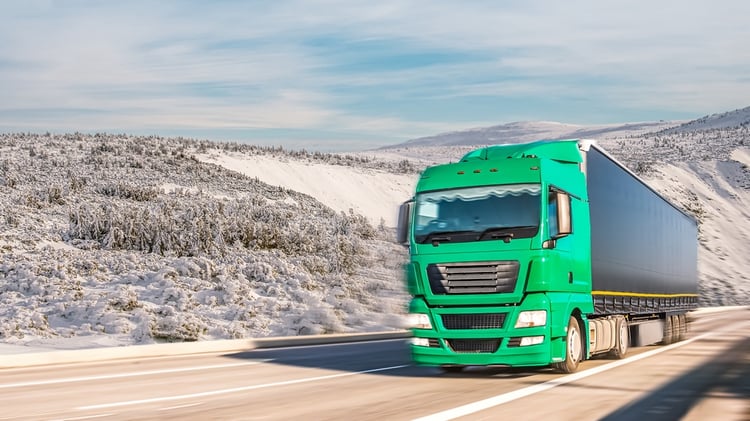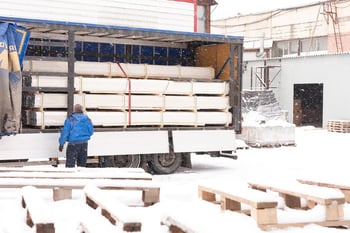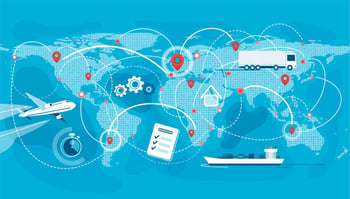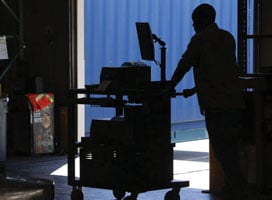
Is your business ready to face the threat of climate change? Warehouses and fulfillment centers may face an increasing number of supply chain disruptions and severe weather events that impact business as usual. Get out in front of these challenges and mitigate risk by increasing efficiency, lowering your carbon footprint, and building a more sustainable, more resilient supply chain.
Climate Change and Supply Chain Disruptions
Climate change has become a concerning threat to warehouses, distribution centers, and the overall supply chain. Becoming a sustainable business is a worthwhile goal and necessary for many reasons. But being ready to face serious climate change disruptions is also important.
 A recent Harvard Business Review study of 12,000 suppliers throughout the United States and Asia measured climate-related risks being faced in various industries. The study revealed that only 11% of suppliers were fully prepared to handle a weather-related disruption.
A recent Harvard Business Review study of 12,000 suppliers throughout the United States and Asia measured climate-related risks being faced in various industries. The study revealed that only 11% of suppliers were fully prepared to handle a weather-related disruption.
Threats from extreme weather events like hurricanes, floods, tsunamis, and wildfires are becoming more frequent and severe. These events will inevitably impact or halt production and affect costs.
According to a 2020 McKinsey report, the probability of a hurricane strong enough to disrupt semiconductor supply chains will increase up to fourfold by 2040. Such an event could potentially lead to the damage of physical assets, disruption of the flow of raw materials, labor issues, loss of sales, and more, resulting in substantial revenue and profit losses.
Just this past year, the U.S. Senate held a hearing on the topic called “Bottlenecks and Backlogs.” During the hearing, figures provided by the CDP, a non-profit that monitors the environmental impact on businesses, revealed that climate-related disruptions will cost U.S. companies $120 billion by 2026.
The committee highlighted recent disruptions to illustrate how much the overall GDP stands to lose in the coming years. For example, the recent drought impacting the Mississippi River could cost the GDP more than $18 million. And rising sea levels at busy ports like Los Angeles, Long Beach, New York, and New Jersey could cost the nation tens of millions.
Climate Change Risk Management is Critical
Whether it’s a Category 5 hurricane that wipes out a major shipping port, an intense storm that closes airports and roads, or a wildfire that destroys railroad tracks, global weather events are becoming more common and a serious business risk. EventWatchAI, a risk event monitoring platform, recorded a 36% year-over-year increase in the number of severe weather events in 2022.
 Adapting to climate change is no small matter for businesses. It requires transformational change that permeates through every level of the organization. But it also doesn’t need to be done all at once. Experts recommend that organizations choose various initiatives and approach them one step at a time.
Adapting to climate change is no small matter for businesses. It requires transformational change that permeates through every level of the organization. But it also doesn’t need to be done all at once. Experts recommend that organizations choose various initiatives and approach them one step at a time.
In general, supply chain risk mitigation strategies are categorized as either “bridging” or “buffering.” Bridging means a company “bridges” the gap with its suppliers to ensure there is sufficient communication before, during, and after any type of crisis. An example might include integrating tracking technology with supply chain partners to inject more visibility throughout the supply chain.
Buffering refers to having sufficient inventory reserves to handle any supply chain disruptions due to climate-related events. For example, your warehouse or distribution center holds extra stock on hand of its most popular items during hurricane season to reduce the risk of stockouts.
Tips for Mitigating the Climate Change Risk
The threat of climate change to your warehouse, distribution center, and the overall supply chain is significant, particularly if nothing is done to prepare for it. Here are some measures your business can take today to mitigate this climate change risk:
1. Change Your Mindset
Being ready to confront climate change begins with having the right business mindset. For example, your business can incorporate language in its mission statement, recognizing the need for sustainable practices and risk management in the face of growing threats.
2. Consider Reshoring
Relying on suppliers halfway around the globe used to be the norm. But the drastic supply chain disruptions of the past several years have prompted businesses to rethink these strategies. In light of the added risk of extreme weather events, it will make sense for many businesses to choose options closer to home and in less volatile geographic areas.
3. Manage Upstream Risk
 A weak point in many organizations is that they only focus on the risk at their location or the ones closest to it. When your business takes a “big picture” approach, it can more quickly and efficiently identify and mitigate the risks associated with climate change.
A weak point in many organizations is that they only focus on the risk at their location or the ones closest to it. When your business takes a “big picture” approach, it can more quickly and efficiently identify and mitigate the risks associated with climate change.
4. Integrate Your Technology
There is more data available than ever, but your business needs to find a way to make the best use of the information it has. All technology and management systems should be integrated to allow for the sharing of data internally and even among business partners. Also, solutions like artificial intelligence, machine learning, and sensors (RFID tags) can provide real-time guidance and predictions to help your business make more informed decisions.
5. Collaborate With Supply Chain Partners
One lesson many businesses have learned over the past several years is the need for more collaboration among supply chain partners. Specifically, when one partner experiences a climate-related disruption, it can have ripple effects across the entire supply chain. By improving transparency and collaboration among partners, response times can be faster and solutions more effective.
Creating a “green warehouse” should be one of your overall initiatives and business goals. But dealing with the extreme impacts of climate change requires a focused approach to warehouse and supply chain management. By taking action today, you can minimize these disruptions and build a more sustainable and resilient business.

